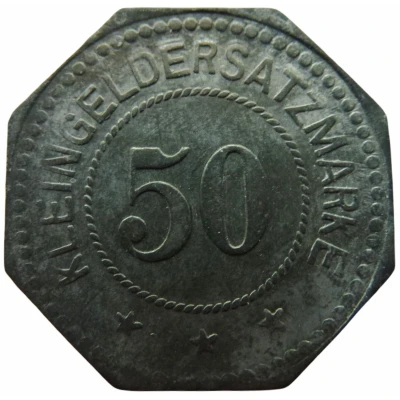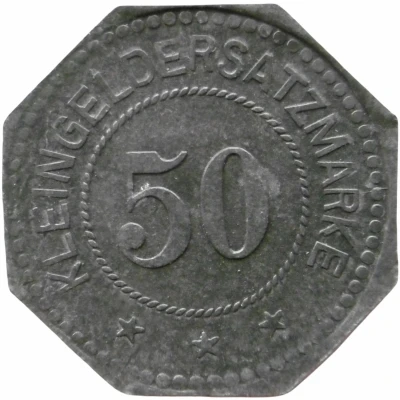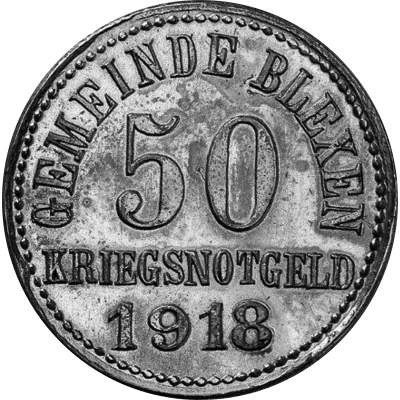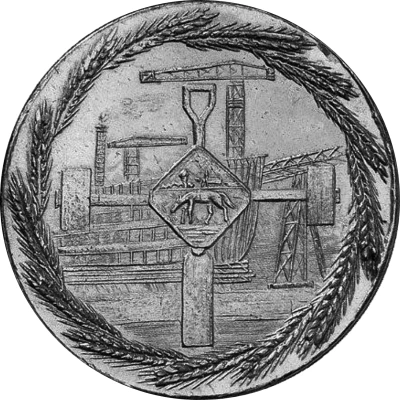


© Willem63 (CC BY-NC-SA)
50 Pfennigs - Dettingen G.M. Eisenlohr ND
| Zinc | 3.0 g | 24.0 mm |
| Issuer | German notgeld (Germany) |
|---|---|
| Period | Weimar Republic (1918-1933) |
| Type | Standard circulation coin |
| Years | 1917-1922 |
| Value | 50 Pfennigs (50 Pfennige) (0.50) |
| Currency | Mark (1914-1924) |
| Composition | Zinc |
| Weight | 3.0 g |
| Diameter | 24.0 mm |
| Thickness | 1.1 mm |
| Shape | Octagonal (8-sided) |
| Technique | Milled |
| Orientation | Medal alignment ↑↑ |
| Demonetized | 1 August 1922 |
| Updated | 2024-10-04 |
| Numista | N#305284 |
|---|---|
| Rarity index | 93% |
Reverse
Pearl rim, legend surrounding beaded circle with denomination centered
Script: Latin
Lettering:
KLEINGELDERSATZMARKE
50
★ ★ ★
Edge
Plain
Comment
Menzel: BBBFa.: Baumwollspinnerei
Interesting fact
One interesting fact about this coin is that it was produced during a time of economic crisis in Germany, specifically during the period of hyperinflation in the early 1920s. The coin was made of zinc, which was a cheaper alternative to traditional metals like copper or silver, and it was designed to be easily distinguishable from other coins in circulation. The coin's design features a portrait of King Ludwig III of Bavaria on one side and the value of 50 Pfennigs on the other. Despite its low value, this coin is now considered a rare and collectible item among numismatists.
Price
| Date | Mintage | VG | F | VF | XF | AU | UNC |
|---|---|---|---|---|---|---|---|
| ND (1917-1922) | 1050 | - | - | - | - | - | - |
Values in the table are based on evaluations by sales realized on Internet platforms. They serve as an indication only for 50 Pfennigs - Dettingen (G.M. Eisenlohr) ND (1917-1922) coin.



